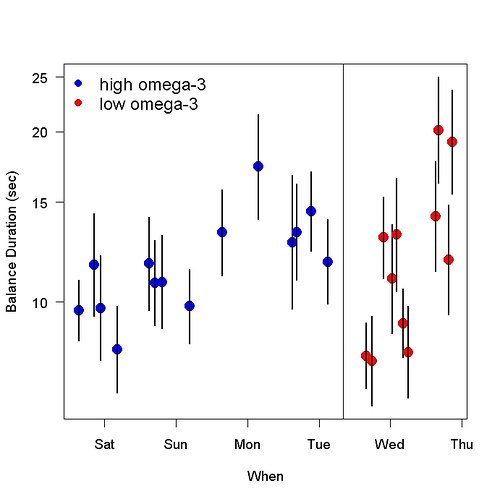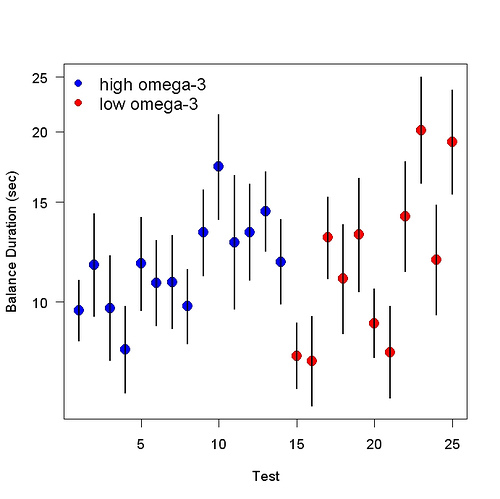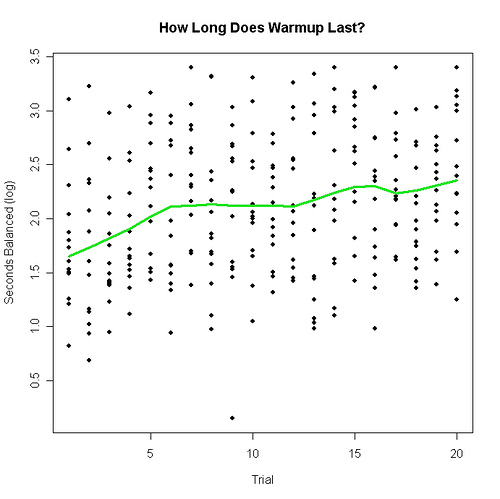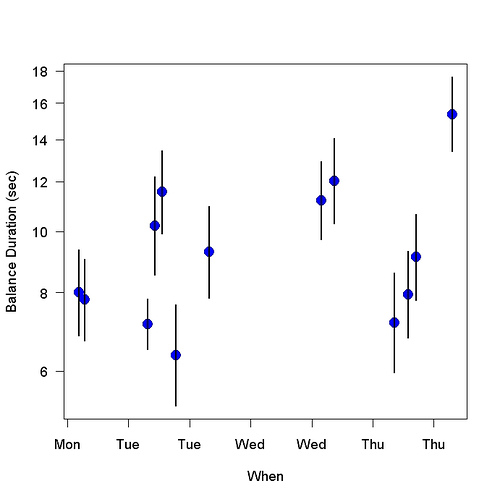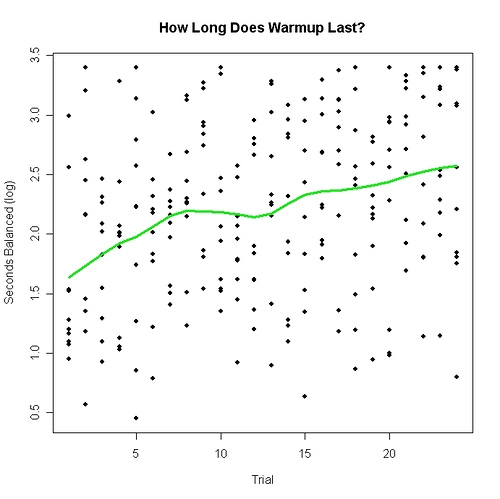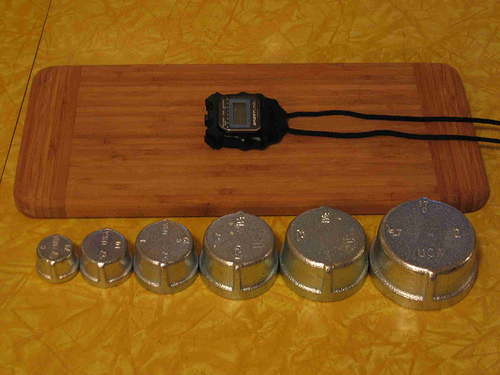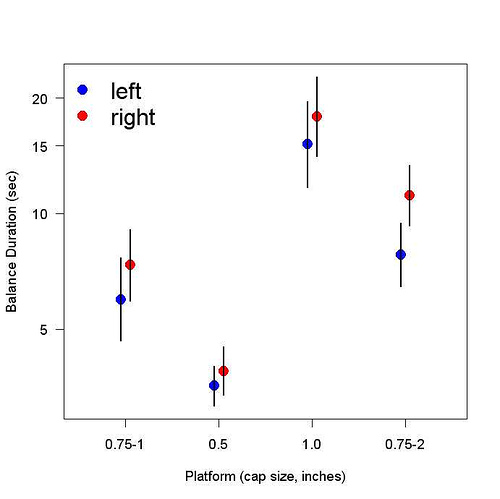Do omega-3 fatty acids improve brain function? I blogged earlier that switching from olive oil (low omega-3) to walnut oil (high omega-3) and flaxseed-oil capsules (very high omega-3) caused my sleep, my balance, and maybe my mood to improve. If you are interested in duplicating what I did, here are details:
Supplies. I take (a) 2 tablespoons/day walnut oil (Spectrum Organic refined). Store locator at www.spectrumorganics.com will help you locate this. Total 240 calories. (b) 10 1000-mg capsules/day of flaxseed oil (Longs cold-pressed softgels). Longs drugstore house brand, which is only available at Longs drugstores. Total 100 calories. I store both in the refrigerator but they are in stores at room temperature (reasonably enough, since walnut trees and flax plants live at room temperature). Procedure. I take both between meals. I divide the walnut oil into 2 doses of 1 T each that I take at least several hours apart. I take 80% of this stuff after noon. I spread the flaxseed capsules out throughout the day, take about 3 at a time. But read on for more helpful info — you may not want to start with exact duplication.
With the new oils, my sleep was consistently and unusually good for about two weeks, making it was clear that the improvement was caused by the new oils (or more precisely, the difference between the new oils and the oil they replaced). Less clear was what aspect of the dietary change made the difference. I switched to walnut oil and flaxseed oil because they were high in omega-3; but they differ from olive oil in other ways as well.
It would be great to know more — both to maximize the effect on myself and to help others get the effect. The wonderful thing about finding a food component that improves sleep — if that isn’t wonderful enough — is that it is likely to improve the brain in all sorts of other ways, too. (In contrast to my previous sleep research on the effects of non-food-components, such as standing and breakfast, where the improvements were probably specific to sleep.) The data about omega-3 support this view: A wide range of improvements in mental function have been observed. Assuming omega-3 causes a single change in the brain, that change causes (a) a reduced rate of Alzheimer’s, (b) less depression, and (c) better sleep — so it is likely to be widespread in the brain.
Since my earlier post, I’ve gathered some new and helpful data.
First, a Shangri-La-Diet forum poll found that most people who used olive oil for the diet had better sleep (10 out of 12), even though olive oil is relatively low in omega-3. Can even a small amount of omega-3 improve sleep? (Small compared to my current dose. SLD dieters consume large amounts of olive oil compared to everyone else.) Or is some other component of olive oil causing the change?
Second, after reading my earlier post, Catherine Johnson remembered that “I realize that I started sleeping miserably when I stopped taking Omega 3s.”
I trust that sort of thing. I had had a similar now-I-understand experience. After figuring out that lots of standing improves sleep, I remembered that several years earlier I had sleep very well the night after visiting lots of art studios during an Open Studios day. At the time I had guessed that it was all the art-inspired thinking that had caused my much-better-than-average sleep. But it was also a day with much more standing than usual.
Third, I reduced my flaxseed-oil intake by half: I took 5 capsules instead of 10. To my great surprise, I woke feeling as I felt with the olive oil. I hadn’t felt that way in weeks. The next day I went back to 10 capsules and again woke up feeling great. Obviously this strengthens the plausibility of omega-3 –> better sleep because the crucial ingredient is apparently in high quantities in the flaxseed oil capsules.
The stunning thing, the reason I was so surprised, is this: I didn’t expect the flaxseed change to make a difference so quickly. When someone ate a zero-folate diet to learn about the effects of folate, it took months for the effects to become clear. Although I had noticed the sleep improvement caused by the new oils the very next morning, I had assumed that was because I was quite deficient — like someone with scurvy noticing fast improvement with Vitamin C. Someone who is not Vitamin-C-deficient will have to go without Vitamin C for months before scurvy occurs. I had expected to wait weeks before seeing sleep degradation.
If you read about why omega-3 is important, you will read endlessly that our brains are made of it — the fraction of our brain that is omega-3 fatty acids is 10% (Wikipedia?), 60% (a Whole Foods employee), whatever. That is what I had assumed: that omega-3 is a structural element of our brains. Which is no doubt true. I have never heard that it is a metabolic element of our brains. Cars are “made of” carburetors, fan belts, computers, tires, and the like (structual elements); they “run on” gasoline and electricity (metabolic elements). Structural elements are parts. Metabolic elements are fuel. Failure to replace a perfectly good carburetor or other structual element will eventually cause trouble, but it may be several years. Failure to replace gasoline or electricity will cause trouble much sooner. Thus my little experiment suggested that omega-3 was a metabolic element.
If an effect can be turned on and off quickly it is much easier to study than if it takes weeks or months to turn on or off. Upcoming attractions: How I am studying it.
